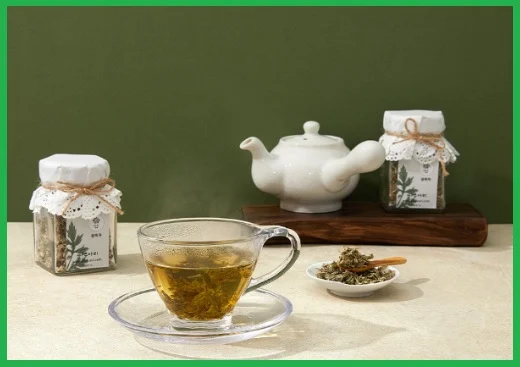Mugwort
Mugwort, known as “쑥” in Korean, is a perennial herb from the Asteraceae family that has been integral to Asian and European cultures for centuries. Renowned for its strong aroma and bitter flavor, mugwort is celebrated for both its medicinal and culinary applications. This article delves into its history, varieties, health benefits, uses, and safety considerations.
Historical and Cultural Significance
Global Uses Through the Ages
- Utilized since prehistoric times for both food and medicine.
- In medieval Europe, associated with healing practices and superstitions.
- Indigenous North Americans employed it for food, teas, and ceremonial smudging.
- In East Asia, particularly Korea, mugwort has been a staple in folk remedies and rituals.
- Featured in Korea's Dangun Myth and traditional festivities like the Dano Festival, believed to ward off evil spirits and promote longevity.
Habitat and Varieties
- Native to Korea, China, and Japan; naturalized in parts of Europe.
- Thrives in dry, sunny environments such as mountains, fields, and roadsides.
- Korean varieties include:
- 산쑥 (Mountain Mugwort)
- 갯쑥 (Coastal Mugwort)
- 흰쑥 (White Mugwort)
- Widely cultivated for both culinary and medicinal purposes.
Health Benefits of Mugwort
Key Functions
- Digestive Aid: Stimulates digestive secretions and alleviates discomfort.
- Pain and Inflammation Relief: Beneficial for menstrual cramps, joint pain, and headaches.
- Improves Circulation: Expands blood vessels and enhances blood flow.
- Immune Booster: Contains antioxidants and antimicrobial compounds.
- Supports Women's Health: Regulates menstruation and eases menopausal symptoms.
- Other Potential Effects: Anti-cancer properties, detoxification, antiviral effects, and hair loss prevention (ongoing research).
Active Compounds
- Artemisinin: Anti-inflammatory and pain-relieving properties.
- Flavonoids: Antioxidant and immune-boosting effects.
- Cineole and Essential Oils: Antimicrobial and circulation-enhancing benefits.
- Estrogen-like Compounds: Support hormonal balance in women.
Usage and Consumption
Medicinal Applications
- Mugwort Tea: Aids digestion, boosts immunity, improves circulation, and promotes restful sleep.
- Moxibustion (쑥뜸): Traditional heat therapy using mugwort to relieve pain and inflammation.
- Poultices and Steam Baths: Applied for muscle and joint issues.
Culinary Uses
- Mugwort Soup (쑥국): Consumed during spring to ward off colds and fatigue.
- Mugwort Rice Cakes (쑥떡): Symbolic food during traditional holidays like Dano.
- Mugwort Pancakes (쑥전): Savory snacks or side dishes.
- Mugwort Tea: Offers a gentle flavor with calming properties.
Side Effects and Precautions
Potential Risks
- Skin Irritation: May cause itching or rashes in sensitive individuals.
- Allergic Reactions: Especially in those allergic to ragweed or daisies.
- Pregnancy and Breastfeeding: Not recommended due to uterine-stimulating effects.
- Drug Interactions: May affect blood thinners or diabetes medications.
Safety Tips
- Use in moderation and monitor for any adverse reactions.
- Consult a healthcare provider if pregnant or on medication.
- Discontinue use immediately if adverse effects occur.
“Healing begins in nature’s kitchen.”



